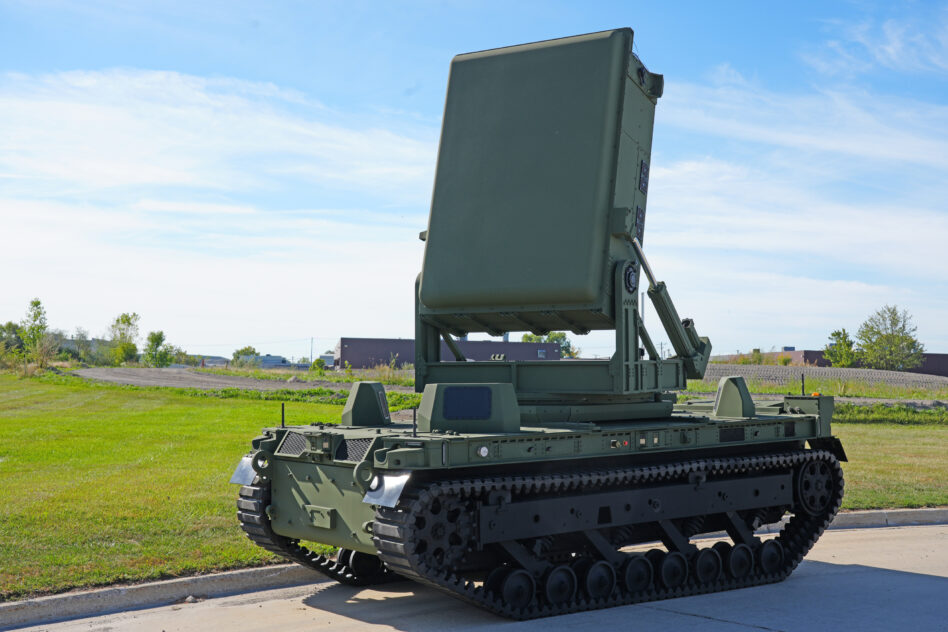Looks like the prime-startup love-fest is in full swing.
This morning, directed energy c-UAS startup Epirus announced that it’s teaming up with General Dynamics Land Systems to build a mobile, counter-drone robotic ground vehicle. The RGV will be equipped with Epirus’ signature Leonidas system, and will be called the Leonidas Autonomous Robotic (AR).
A full prototype will be on display at AUSA next week. Damn, everyone really loves a ground drone these days, don’t they?
Drone-downer: If you’ve been following the counter-drone market explosion, you’ve probably heard of Epirus. The company was founded in 2018 with a unique approach to taking down drones: Instead of jamming, shooting, or hijacking them, Leonidas pretty much fries them from the inside.
Here’s how:
- Leonidas is a high-power microwave (HPM) directed energy system that looks like a big, propped-up mattress mounted on a vehicle.
- The HPM projects intense microwave energy into nearby drones (Epirus says it has a range of 1km for full efficacy and 10km for partial) to disable the electronic components that make them work. That means that–ideally–they pretty much drop them out of the sky.
- Its software-defined design allows Leonidas to alter waveforms, adjust energy output, define safe zones, and update the system in the field.
- And, according to some (pretty sick) footage of a recent demo at Camp Atterbury, Indiana, it works pretty well—Leonidas dropped a 49-drone swarm to the ground in seconds.
So far, the Army has been all over Epirus, awarding the company over $120M in contracts for Leonidas under the IFPC-HPM program since 2023, including a $43.5M contract in July.
Primetime: GD has also been a fan. The big-time prime and Epirus rolled out the Leonidas Stryker, a mobile c-UAS system that (you guessed it) put Leonidas on a Stryker, in 2022. But now, the two are betting that their new integration will be more in line with the whole “future warfare is unmanned” thing. Drones for the win.
Fast fryer: The new Leonidas AR will put Epirus’ HPM on GD’s Tracked Robot 10-ton (TRX) mid-size robotic combat vehicle, which can be autonomous or remotely operated with over 300 miles of range and a max speed of 45 mph. Epirus and GD say they will start testing the fully integrated Leonidas AR in Q1 of next year.
“The robotic piece allows us to move around and extend our ability to project in all kinds of different cases—base defense, border patrolling, running with maneuvering units,” and as “insurance” for expensive missile defense systems, Epirus CEO Andy Lowery told Tectonic in an interview. “If you can detect these systems coming in six kilometers out, you can get to where you need to be in order to curtail them quickly.”
Matchmaking: On top of the tech, Lowery is a big fan of prime-startup teams, especially with GD. “We’ve been together for three, four years now, and it’s only gotten closer and closer over time,” he said. “GD has a very large workforce that can help me scale quickly, and nobody knows how the Army moves around and how to do vehicles for them better than GD, so they are the quintessentially perfect partner for this phase of our quest.”
But, like every relationship, boundaries are important. “If you suck us up and we become GD, you lose all the stuff” that makes startups special, Lowery added. “You need to have neo-primes with enough independence to continue to innovate in a Silicon Valley style.”

